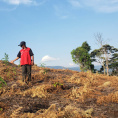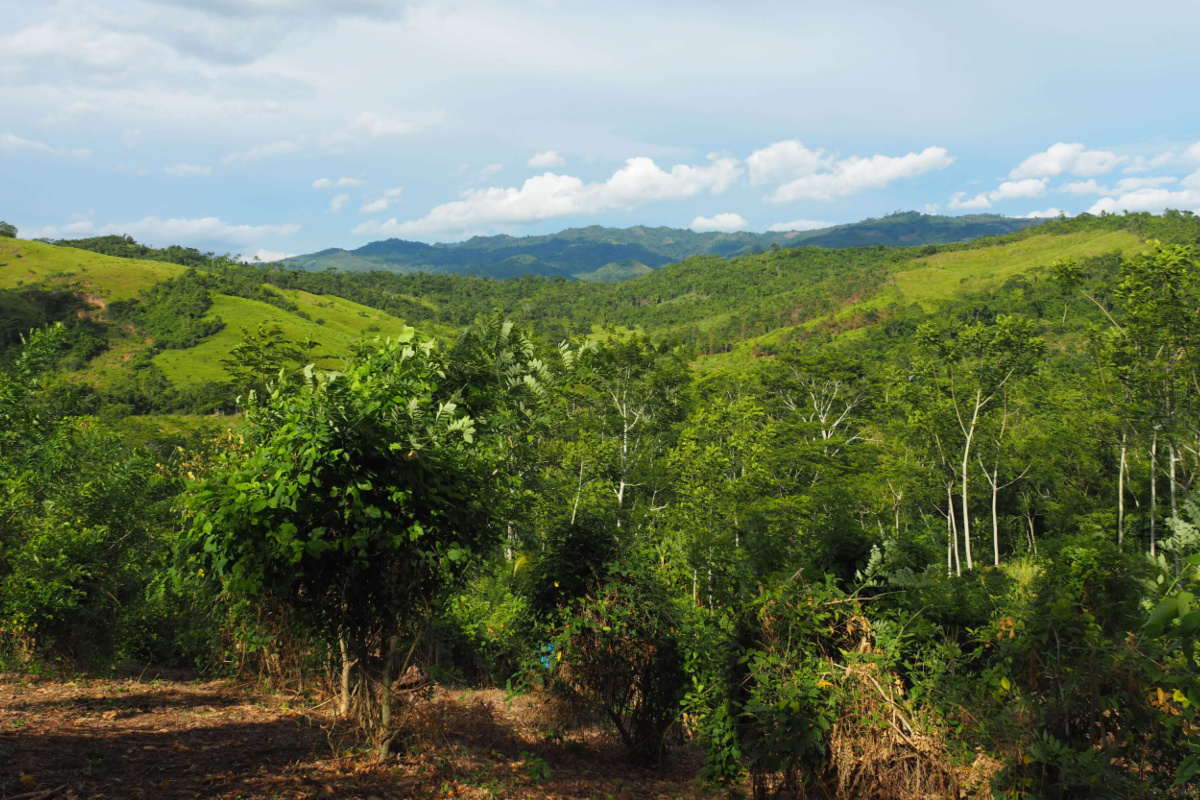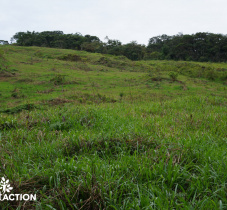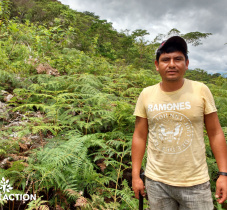Project description
In the heart of the Peruvian Amazon, the project financed by Reforest'Action and carried out in the field by CIGDES aims to support small landowners and native communities of the Kiwcha de Lamas ethnic group in the implementation of conservation and agroforestry techniques in response to severe land degradation due to the presence of invasive ferns, abandoned natural or artificial pastures and forest fires.
The project at a glance
- Number of trees to be planted: 600,000 trees
- Species planted:
- Productive species: hevea, majambo and maya walnut
- Leguminous trees: leucaena, guaba, pashaca and algarrobo
- Type of project: reforestation of degraded ecosystems and agroforestry
- Planting period: January to April 2022
Context
In the heart of the Peruvian Amazon, deforestation and natural hazards are endangering the various forest ecosystems. In the provinces of Lamas, San Martín and El Dorado, the presence of invasive ferns, abandoned natural or artificial pastures and forest fires are severely degrading the soil. In 2017, Peru launched a national strategy to curb these phenomena and adapt the country's forests to climate change. In these three provinces, Reforest'Action's project is in line with government and regional policies to restore forests on private or communal land.
Our partner and our actions in the field
A partnership between Reforest'Action and the CIGDES
In the three provinces of Lamas, San Martín and El Dorado, the project led by Reforest'Action and CIGDES is in line with government and regional policies that aim to restore forests on private or communal lands. On site, we support the transformation by local producers and indigenous communities of degraded areas into forests, thanks to the introduction of productive species or leguminous trees. CIGDES, our local partner, will thus assist small landowners and native communities of the Kiwcha de Lamas ethnic group in the implementation of conservation and agroforestry techniques.
The tree species planted on the project
In all, seven species are being introduced as part of the project: productive species (hevea, majambo and Mayan walnut) and leguminous trees (leucaena, guaba, algarrobo and pashaca). Planted in agroforestry through the establishment of a multi-stage forest system, these various species will develop rapidly, even on the region's soils, which are not very fertile.
The benefits of the project
In the long term, the scheme will bring many long-term benefits to local people: additional income through the sustainable harvesting and marketing of the fresh latex, rubber, fruit and seeds produced. In terms of ecosystems, the project will improve soil conditions, improve the flow of micro-watersheds, reduce water and wind erosion, increase wildlife habitats and ensure continuity between different forest cover.








